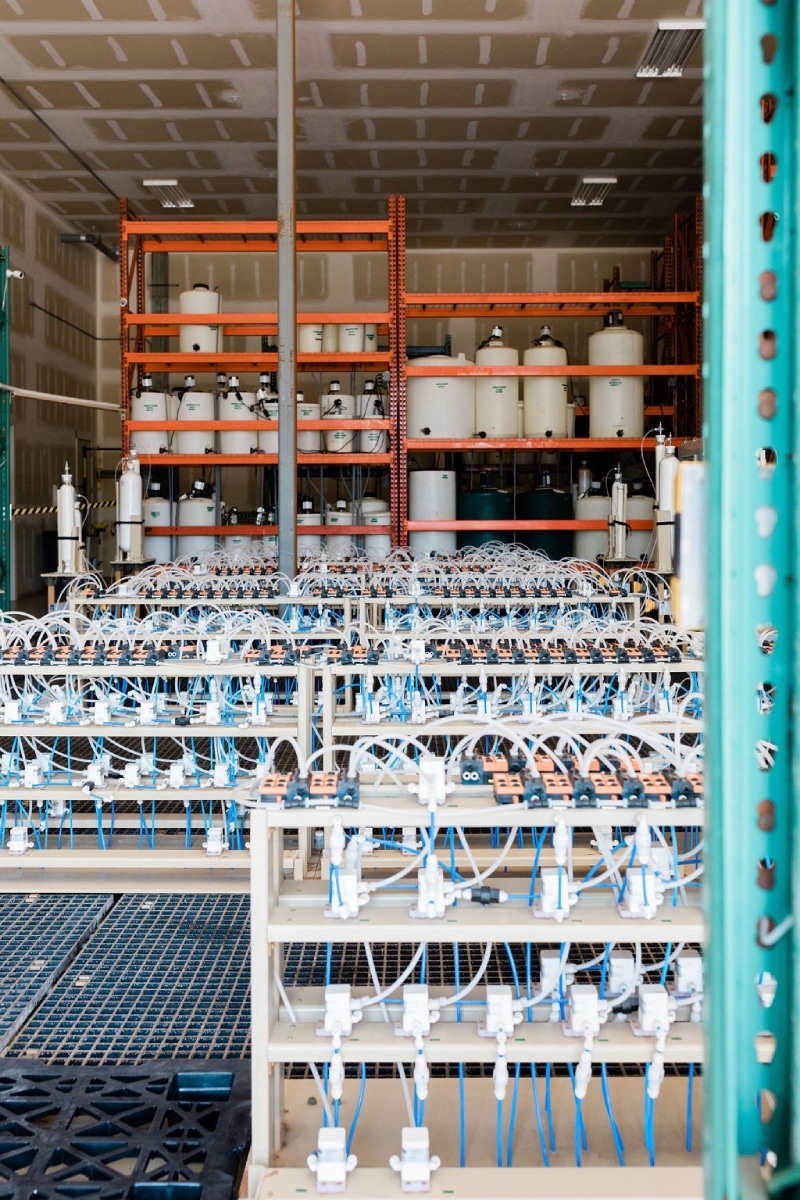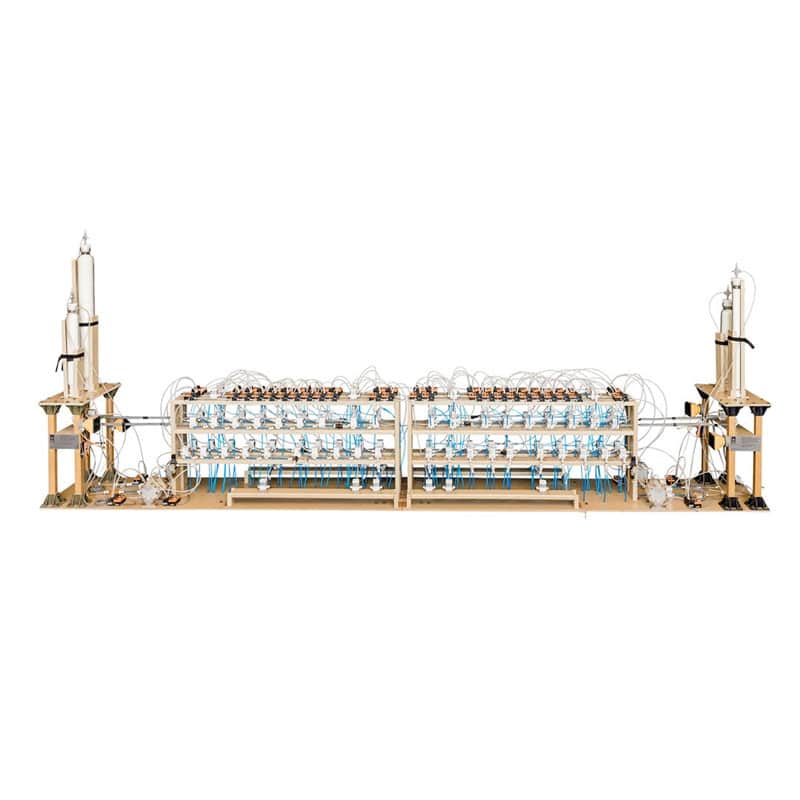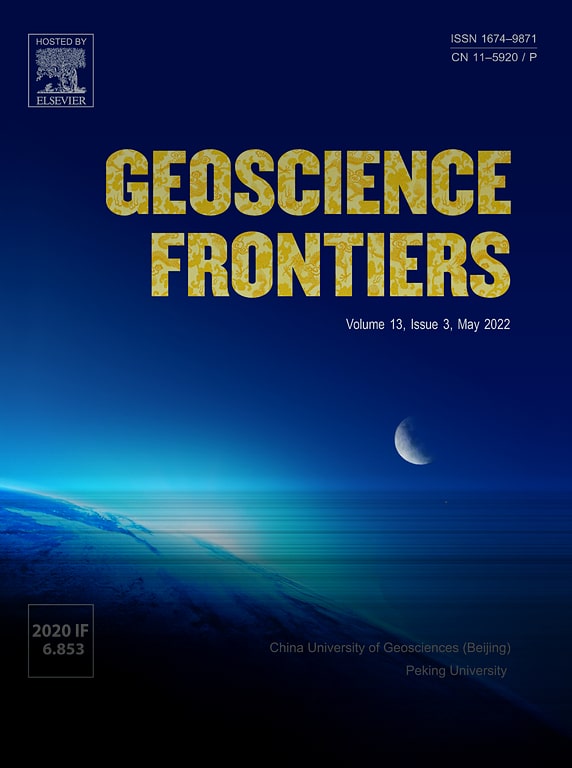Attainment of sustainability of individual rare earth elements requires major changes from the low selectivity, low efficiency and environmentally damaging industrial solvent extraction processes used today to separate and recover individual rare earth elements. Some of the highest pollution levels on Earth are associated with present production of rare earth elements in China where more than 70% of the global supply is mined and over 95% is refined and made into products that are sold to the global community. MRT™ processes provide a viable, tested green chemistry alternative to solvent extraction with much lower capex and opex values.
Highly Selective Separations of Individual Rare Earth Elements
Clean, Compact and Rapid Separation of Individual Rare Earth Elements including from Adjacent Pairs at High Recovery (>99%) and High Purity (>99%) Levels from Industrial Streams
SuperLig® MRT™ systems for the separation of individual rare earth elements have:
- Low OPEX and CAPEX
- Simplified green chemistry and green engineering processes that operate in packed column mode
- High selectivity with the ability to efficiently and selectively separate adjacent pairs of the elements
- Few separation stages
- Minimal carbon footprint
- No use of organic solvents
- Low working capital requirements
- Minimal waste generation
- Minimal energy usage
- Rapid thermodynamics (immediate system equilibrium)
- Rapid kinetics
- Fast processing times
- Low chemicals usage
- Simple reagents for SuperLig® column wash and elution
- Rapid and complete elution of the bound rare earth element from the SuperLig® column in a small volume of eluent for simple end-product production
MRT™ Selectively Separates Individual Rare Earth Elements Cleanly and Rapidly in a Few Stages, not Hundreds
Major advantages of the MRT™ process over solvent extraction include:
- Low OPEX through reduced chemical usage, less labor, minimal energy usage and more efficient processing
- Low CAPEX through use of simpler equipment, small plant size (footprint) and elimination of hundreds of mixer settlers used in solvent extraction systems
- Fast product throughput, thereby eliminating tremendous working capital needs from in-process metal inventory lock-up
- Elimination of large quantities of reagents, solvents, corrosive chemicals, waste and environmental, safety, regulatory and permitting issues associated with solvent extraction
- Attainment of positive ESG impact through adherence to the principles of green chemistry and green engineering
- Enablement of a circular economy leading to sustainability of individual rare earth separations through high recovery rates and minimal loss of rare earth elements during processing
- Simplification of the rare earth element separation process
- High individual rare earth element selectivity, with the ability to efficiently and selectively separate adjacent pairs of rare earth elements
- Elimination of large numbers of separation stages
- High rare earth element recovery rates
- Greatly reduced plant size (footprint)
- Immediate system equilibrium
- Rapid kinetics
- Elimination of hazards, including fire risk, and other issues resulting from solvent extraction use
MRT™ Greatly Simplifies Separations of Individual Rare Earth Elements
The SuperLig® MRT™ process has been demonstrated to separate all individual rare earth elements (except promethium), including adjacent pairs such as dysprosium/holmium, and neodymium/praseodymium, derived from a mined ore pregnant leach solution at >99% levels and >99% purities at ambient temperature and atmospheric pressure.
Demonstration at Pilot Plant Scale of Highly Selective Separations of Rare Earth Elements at High Purity and High Recovery
- Separation of 99%+ of the sixteen rare earth elements as a group from accompanying impurity metals found in the pregnant leach solution
- Separation of 99%+ of the scandium from this rare earth element group at high purity (99.9%+)
- Separation of the heavy fraction (samarium-lutetium) from the light fraction (lanthanum-neodymium + yttrium) at the 99%+ recovery level
- Separation of 99%+ of the dysprosium from the heavy rare earth element fraction at 99.99% purity
Caption: Automated pilot plant manufactured by IBC for separations of rare earth elements showing close-up of separation modules, automation panel and individual separation module. Source: IBC Advanced Technologies, Inc.
MRT™: Sustainable, Highly Selective Separations of Individual Rare Earth Elements from Spent Permanent Magnets
The SuperLig® MRT™ Process Offers a Sustainable, Green Chemistry, Tested Method for Separation of Individual Rare Earth Elements at 99%+ Levels from Spent NdFeB Permanent Magnets.
An MRT™ process has been used to separate and recover neodymium and dysprosium as individual metals from a nitric acid leach solution of spent NdFeB permanent magnets. Neodymium and dysprosium were individually separated in single pass separations at virtually 100% recovery and 99.9%+ purity levels. These results demonstrate that REE can be recycled in a circular economy leading to sustainability of individual rare earth elements, a feat that cannot be duplicated by conventional solvent extraction technologies.
| SuperLig® MRT™ vs. Traditional Separations of REE | |
|---|---|
| Traditional separation levels | SuperLig® MRT™ |
| ~70% | >99% |
Read our paper about recycling of rare earth elements from permanent magnets.
Permanent magnets are of three types– rare earth-cobalt alloys, rare earth-transition element alloys and rare earth-iron alloys. The latter magnets are the most common and are characterized as NdFeB. The content of rare earth elements in these alloys ranges from 25 to 40 weight percent. Rare earth elements present in these magnet alloys include samarium, cerium, neodymium, praseodymium, gadolinium, dysprosium, terbium, and erbium. Permanent magnets were responsible for over 90% of the total value of global consumption of rare earth elements in 2018. Approximately 26,000 tons of rare earth elements (counted as rare earth metal oxides) are used annually for NdFeB permanent magnets alone. Recycling of rare earth elements from spent permanent magnets is a potential major supply source of these critical metals which is not being used since the recycling rate of rare earth elements is <1%.
Expert Reviews
Balaram 2019. Rare Earth Elements: A Review of Applications, Occurrence, Exploration, Analysis, Recycling, and Environmental Impact, Geoscience Frontiers, 10, 1285-1303.
“In recent times, a revolutionary technology called SuperLig® molecular recognition technology (MRT) is being increasingly used to selectively separate and recover individual REE.”
Smith, Y.R., Kumar, P., McLennan, J.D., 2017. On the Extraction of Rare Earth Elements from Geothermal Brines, Resources, 6, 39-54.
”This process termed molecular recognition technology (MRT) is effective at various stages in metal life cycles. The MRT process is based on selective recognition of specific metal ion guests by supported ligand hosts allowing highly selective individual separation and recovery of metals from complex matrices present in industrial feed solutions.”












